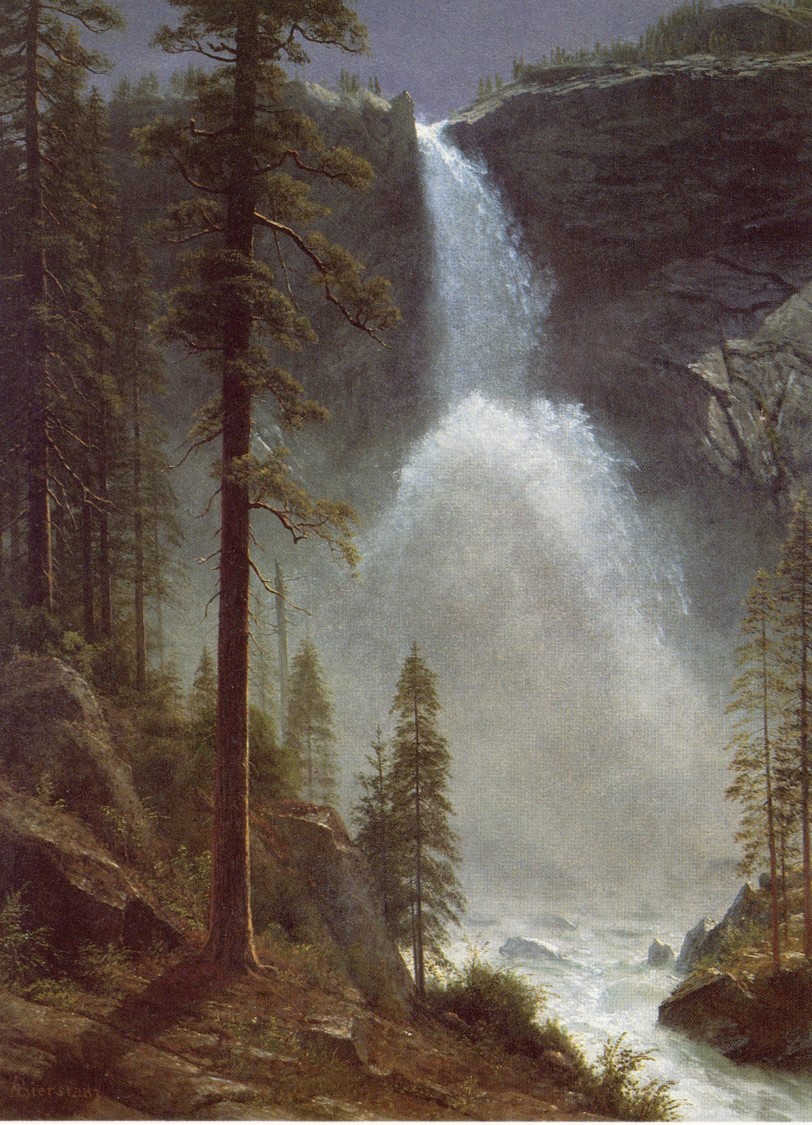Albert Bierstadt (1830-1902) was a German-American artist who specialized in romanticized landscapes of the American West. When he was just two years old, his family emigrated from his birthplace of Solingen, Germany to New Bedford, Massachusetts, where he spent the majority of his formative years. At the age of twenty-three, Bierstadt traveled to Düsseldorf, Germany and then to Switzerland and Italy where he studied art informally for about four years. When Bierstadt returned to the United States, he opened a studio in New York City and became associated with the Hudson River School, a nineteenth century American art movement largely comprised of landscape artists. Bierstadt combined his theatrical German painting style with the luminism (a style in which artists captured the effects of light to create calm, tranquil landscapes with few visible brushstrokes) of Hudson River School painters to create a new type of powerful, nationalistic landscape. In 1859, Bierstadt made his first trip to the American West in the company of Frederick W. Lander’s Honey Road Survey Party. During the long trek to the southern pass of the Rocky Mountains, he took photographs and made sketches of the untamed landscapes. When Bierstadt returned to his studio in New York, he painted his first series of large-scale Western landscapes. The financial success and popularity of this work was the foundation upon which he built his reputation. Enamored by its austere beauty and rugged wilderness, he made at least three more trips to the West. During Bierstadt’s second expedition in 1863, he and Fitz Hugh Ludlow (1836-1870), an author and explorer, spent seven weeks crossing Yosemite Valley to reach their destination of San Francisco. On this trip (and a third around 1871) he encountered Nevada Falls and created a series of plein air, or outdoor, sketches. Following this trip, Bierstadt produced a second series of paintings dedicated to the awe-inspiring geography and spiritual power of Yosemite.Nevada Falls captures the glowing majesty of the cascading blue-grey waterfall that spills against the warm reds and yellows of the trees at its base. While this idyllic image appears to capture a near-perfect landscape, it is not a true likeness. Bierstadt pushed past the boundaries of reality to create a fantastical and more dramatic view of the natural world. This theatrical style, however, eventually led to a decline in his popularity as critics began to classify his work as “too European.”In September 1975, the owner of Nevada Falls contacted the Everson Museum of Art asking if the museum would be interested in purchasing the painting. The museum curator began a correspondence, arranging several meetings both in Syracuse and at the owner’s home in Dryden. While these discussions were underway, Nevada Falls was featured in the 1976 exhibition Panorama of American Art at the Everson, and the museum purchased the painting later that year. Nevada Falls is currently on view in Highlights from the Permanent Collection through August 4, 2019.
-Emily Dugan, Curatorial Intern


